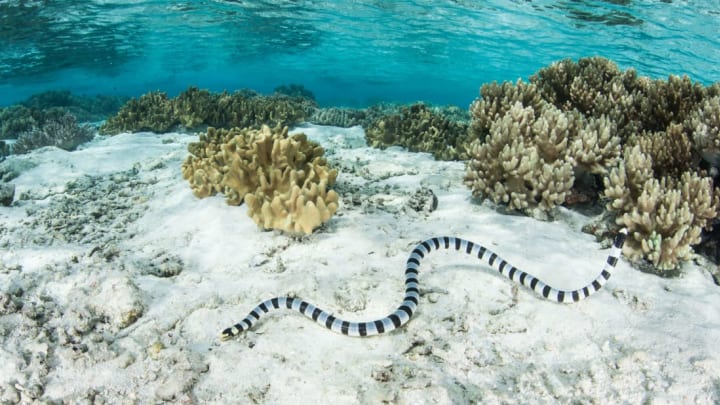If you found out your favorite snorkeling spot was home to 5-foot-long venomous snakes, you’d probably scope out safer waters somewhere far, far away—but a dauntless group of grandmothers did just the opposite.
While studying the small, harmless turtle-headed sea snake in New Caledonia’s Baie des Citrons, two researchers sighted several greater sea snakes (Hydrophis major). The much larger, potentially lethal species proved elusive, and the scientists saw only about 30 of them over three years.
Then, in 2017, seven local grandmothers in their sixties and seventies had an idea. According to a press release, the self-styled “Fantastic Grandmothers” suggested to the researchers—Claire Goiran of the University of New Caledonia and Rick Shine of Macquarie University—that they observe and photograph the greater sea snakes on their regular snorkeling excursions.

“As soon as the grandmothers set to work, we realized that we had massively underestimated the abundance of greater sea snakes in the bay,” Goiran said in a press release.
Because of noticeable differences in their patterns, it’s easy to tell greater sea snakes apart in photographs. Not only did the women identify more than 249 greater sea snakes in the bay, they also helped shed light on their breeding habits and offspring. Shine told CNN that the women are a “powerful example” of how members of the broader public can enrich scientific discoveries.

“The incredible energy of the grandmothers and their intimate familiarity with ‘my’ study area have transformed our understanding of the abundance and ecology of marine snakes in this system,” Goiran said. “It’s a great pleasure and privilege to work with them.” The scientists published their findings in the journal Ecosphere.

Fortunately, the Fantastic Grandmothers swam away from the study unscathed. In fact, there’s never been a recorded incident of a greater sea snake biting someone in the area, which Goiran believes implies a “benevolent disposition.”
The idea of a warm-hearted, cold-blooded venomous reptile seems strange, but perhaps not as weird as these really weird snakes.
[h/t CNN]
